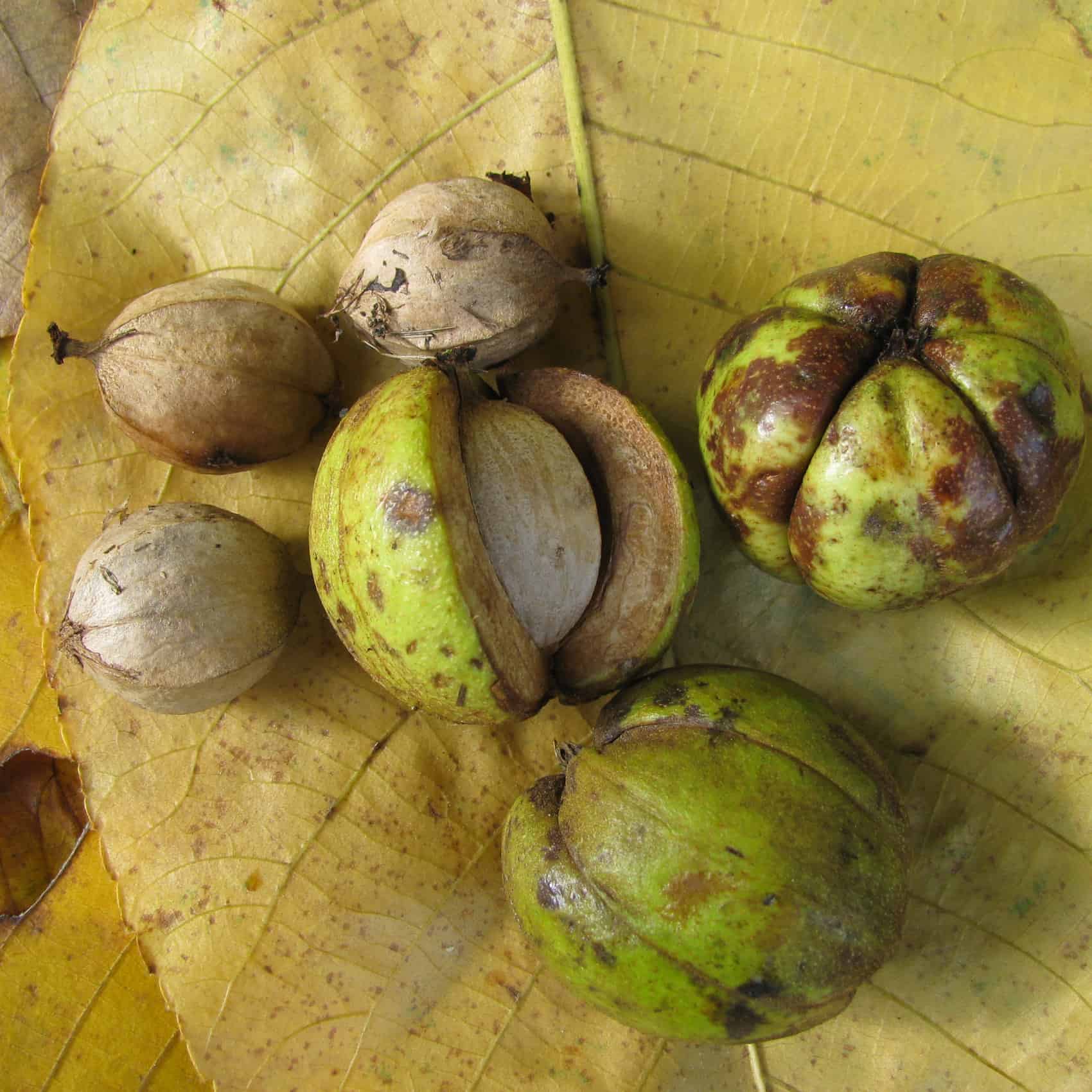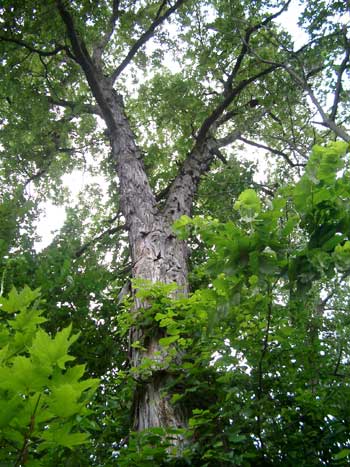| Weight | N/A |
|---|---|
| Dimensions | N/A |
| Botanical Name | Carya ovata |
| Zone | 3-8, but has adapted into zone 9 |
| Soil | Sandy loam, clay, loam, well drained, moist to dry, medium moisture |
| Light | Full sun |
| Pollination | Self-fertile, larger nut production with multiple trees |
| Years to Bear | 20 |
| Form | Tall upright deciduous nut bearing tree with spreading branches |
| Height | 70-100 feet |
| Spread | 40-70 feet |
| Spacing | 40 feet |
| Bloom | Yellow/Red/Green flowers at the ends of drooping catkins on younger branches and twigs in early spring |
| Ripening Time | Late summer/early autumn |
| Fruit | Green nuts 2-3" in diameter with a look smaller but similar to black walnut |
| Pollinator Friendly | Yes |
Shagbark Hickory
$10.00
Carya ovata. This Midwest native tree is a spectacular member of the walnut family growing into a large (60 to 80 feet tall at maturity and 30 to 50 foot canopy) spreading shade tree. It gets its name for its bark which peels off in great plates or sheets giving it a shaggy look. The nut is edible, and prized by humans and wildlife including black bears, foxes, mice, chipmunks, squirrels, rabbits, and a number of birds enjoy the nuts every fall.
The loose bark provides habitat for many species of birds and bats who tuck up into the loose folds of the bark. Hickories can tolerate poor soils, drought and even heavy clay so long as there is adequate drainage provided (keep root crowns above saturated clay water table). They do not handle salt well, so do not make a good coastal planting.
Like walnuts, hickories are tap rooting trees and should be planted where they will remain for their lifetime. Excellent wildlife tree, especially for songbirds, game birds, migratory and cavity nesting birds.
Hickory is also well known for its beautiful tight grained wood. Hickory wood is known as an excellent firewood, and is also used for making specialty smoked food products such as hickory smoked bacon, etc.
These trees grow a tall straight trunk and need plenty of room. While there are some pests and diseases which attack hickories, these trees are considered stable. Relatively slow growing these extremely tough trees will reach maturity and begin producing nuts in about 40 years, and can continue to produce nuts for as many as 300 years. They prefer moist, humid climates but require well drained soil. Generally not found in groves, instead they grow individually in forests of maple, oak and other deciduous trees.
USDA regulations prohibit shipping of Hickory species to New Mexico.



Reviews
There are no reviews yet.